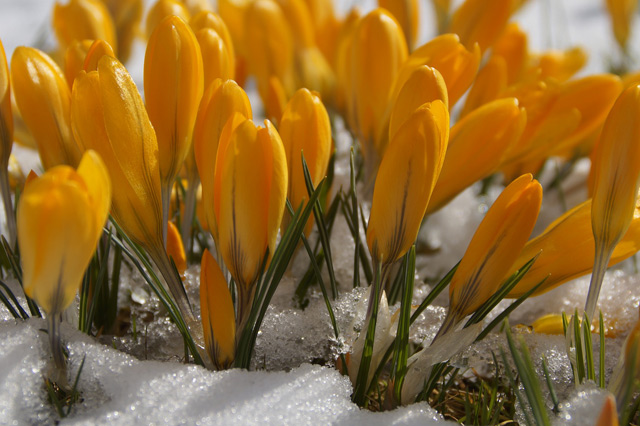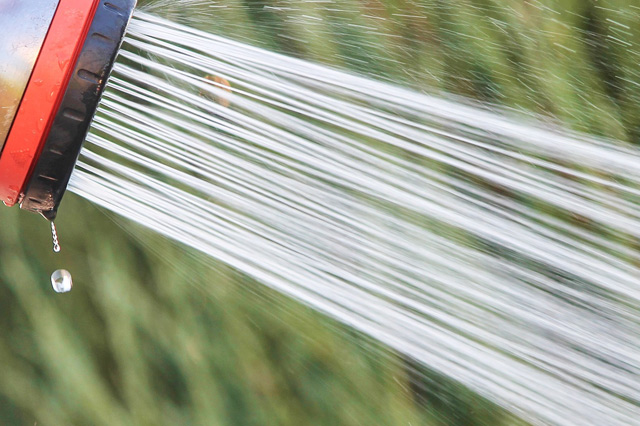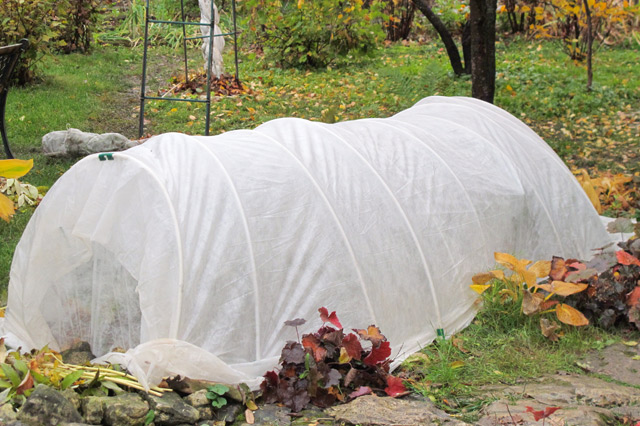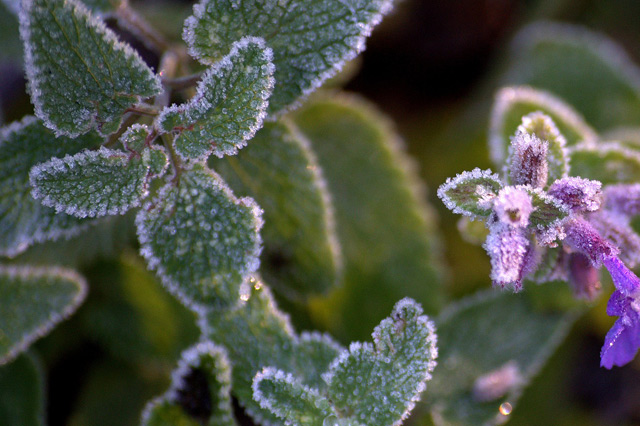Winter is not a death sentence for your garden and outdoor plants, but they need your help as they endure frequent frosts and freezing temperatures during the winter months.
Plants slow down in the winter months and are susceptible to frost damage, ground freeze, and death. You can help them through it with simple actions before and during the cold season.
In this article, gardeninginfo-online.com offers overwintering tips, plant and soil information, how to protect your plants, and answers frequently asked questions about plant survival in the wintertime.
Watering Plants to Prevent Frost Damage
Dry soil in winter is one of the deadliest factors during the season. Water is a natural insulator and helps regulate soil and root temperatures. As water becomes more difficult for plants to absorb, the cells of the plant shrink.
This change makes plants highly susceptible to freeze and frost damage, and it goes without saying that ground freeze can kill your plants at their roots.
Use the following tips to help avoid ground freeze and extensive damage from frost:
Deep Watering – As winter approaches, deep water your plants, shrubs, and garden weekly. A deep watering consists of allowing water to run and be absorbed in the ground to a depth of six inches or more.
While this may seem counterintuitive, it is the water in the soil that will insulate the root systems from freezing.
Water Before the Freeze and Frost – Pay attention to the weather. When freezing temperatures and frost are in the forecast, water your plants the evening before. Wet soil retains its warmth and helps to regulate the temperature and humidity around the plants.
Apply Mulch – Apply three to four inches of organic mulch to your plants and entire garden. Mulch helps the soil retain moisture and warmth in even the harshest cold weather.
DIY Plant Covers for Winter Weather
Together with watering and mulching, you can cover your plants to further assist them in surviving the winter months.
Unlike wrapping evergreens in burlap, it is vital that when covering plants, the cover itself is not in contact with the foliage.
Use the following tips to cover your plants:
The Cover – You can use bedsheets, light blankets, burlap, shade netting, or fabric row covers to cover your plants effectively. However, plastic covers are not recommended, unless placed over another material or fabric.
Support the Cover – Drive metal rods or wooden stakes (taller than the plants) along the row or area you plan to cover. Make sure that you have enough support to keep the cover from resting on the foliage of your plants.
Another way to support the cover is to use chicken wire to create an arch over the plants and let the cover rest on the chicken wire.
In either case, use zip-ties, nails, or staples to secure the cover and chicken wire (if used) in place.
Pruning and Fertilizing Plants at the Right Time
While pruning and fertilizing plants is part of a healthy growth cycle, these activities can be very detrimental to your plants when performed at the wrong time. The following will help you recognize the right time to prune and fertilize:
Pruning – Pruning activities encourage growth and allow you to shape your plants and guide that growth in the direction you desire.
For deciduous (or woody) plants, late fall or early spring (when they have lost their foliage and gone dormant) is the best time to prune them.
For evergreen (or Perennial) plants, springtime is best, as they are entering their growing season.
No pruning should take place after early summer for any species, as the new foliage encouraged by the pruning will not have time to mature (harden) before the winter months.
Fertilizing – Fertilization encourages growth and should only be applied just before or during the plant’s growing season (early spring through early summer).
No fertilizing should take place after early summer for any species, as the new foliage encouraged by the fertilization will not have time to mature (harden) before the winter months.
People Also Ask
Q: How Do I Protect My Potted Plants in Winter?
A: Water your potted plants the evening before frost is expected, and apply organic mulch on the soil, up to the rim of the pot. You can also move your potted plants to the garage, or other insulated space indoors.
Q: What Do You Cover Plants With?
A1: The most common material used to cover plants and shrubs is burlap. Bed sheets, drop cloths, and even blankets can be used over a support structure or stakes to avoid contact with the foliage or to crush the plant.
A2: Plastic may be used over a sheet, burlap, or other material. Never put plastic directly over your plants, as it can damage them.
Q: What Temperature Is Too Cold for Plants?
A: 32 degrees Fahrenheit is the temperature at which water freezes. Whether or not this or lower temperatures damage your plant will depend on the following factors:
The species of the plant.
Its USDA Hardiness Zone.
Is the plant deciduous or evergreen?
Is the plant in a sheltered spot or wrapped?
The hydration of the soil.
How long the freezing temperatures last.
Q: Which Plants Need to Be Protected from Frost?
A: Houseplants and tropical plants must be protected from freezing temperatures and frost. In the fall, protect vegetable plants (tomato, pepper, corn, etc.) from frost. In early spring, blooming plants, shrubs, and trees must be protected from frost and sudden freezes.
Q: Can Frost Damaged Plants Be Saved?
A: Yes – To recover from frost damage, potted plants should be moved to a location that does not receive direct sunlight, and unless the plant can be moved indoors or to a protected area, do not prune damaged leaves or stems.
Only prune damaged plants after freezes have passed. This will guard against removing living tissue. If isolated damage has occurred to the plant, prune several inches below the injured tissue.
You can minimize frost damage to woody plants by misting their foliage before direct sunlight hits them.
Q: Can You Wash Frost Off Plants?
A: No – After a freeze, do not attempt to wash frost off of plants or shrubs.
Q: Should You Water Plants Before a Frost?
A: Yes – Well-hydrated plants are able to withstand colder temperatures. Moist soil and higher humidity around the plants will work to counteract the temperature extremes.
Winter Protection for Plants
For your plants to survive the winter months, they will need your help. Frequent frosts and prolonged freezing temperatures can injure your plants at a cellular level.
In this article, you’ve discovered how water can counteract the effects of freezing weather and push back against damaging frost. You’ve also uncovered easy ways to insulate your plants using covers or mulch, and found the answers to frequent frost and freeze-related questions.
Plants naturally slow down in the colder months, and from time to time will need your help to avoid damage and eventual death. By taking simple measures before, during, and after freezing weather, you are helping your plants and garden to survive winter and thrive in the coming warmer months.
Sources:
http://extension.uga.edu/publications/detail.html?number=C872&title=Winter%20Protection%20of%20Ornamental%20Plants
https://www.extension.iastate.edu/news/2009/oct/061201.htm
https://blogs.cornell.edu/ccesuffolkligardening/2015/11/25/simple-ways-to-protect-plants-now-from-winter-injury/
The post How to Keep Plants Alive in Winter appeared first on http://gardeninginfo-online.com.




No comments:
Post a Comment